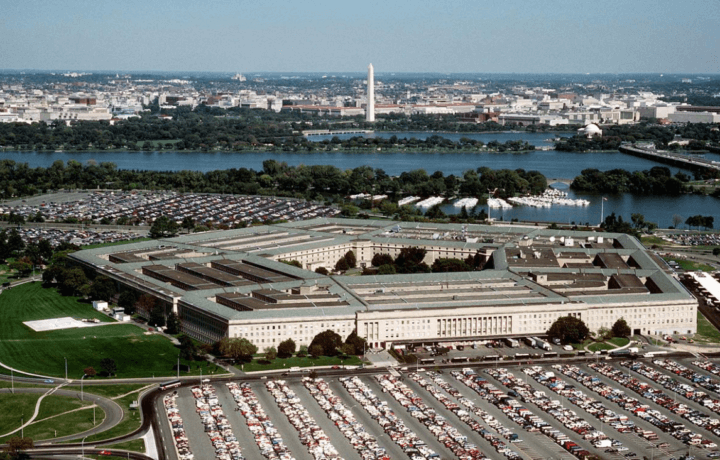The White House released its Fiscal Year 2023 Budget request that includes many shifts and adjustments – including higher pay raise for federal employees and service members. But what’s projected for the Department of Defense next year? What can we expect in spending and strategy this upcoming year?
The White House submitted to Congress a proposed FY 2023 Budget request of $813.3 billion for national defense, with $773 billion headed to the DoD. The FY 2023 DoD Budget request of $773.0 billion is a $30.7 billion, or 4.1% increase, from the FY 2022 enacted amount. The increase is due to meeting strength goals, as well as, combating rising inflation.
Taking Care of People
The DoD has a number of key initiatives that require an investment this year. First, the department is planning a 4.6% pay increase for military and civilian personnel. As inflation rises, compensation for the people behind the mission needs to adjust accordingly as well. The DoD is also planning to implement recommendations of the Independent Review Commission on Sexual Assault in the Military, allocating $479 million to this effort. And following the issues in Hawaii this past year, the DoD has earmarked $1 billion for a new Red Hill Recovery Fund to address the health, environmental, and national security needs of the Hawaii community and the Department.
Threats from China and Russia Drive Investments
The FY23 President’s Budget allows DoD to develop, procure, and modernize capabilities to ensure combat-credible forces across all domains to address the pacing challenge from the People’s Republic of China and to address acute threats from Russia:
Nuclear Enterprise Modernization to recapitalize all three legs of the nuclear triad ($34.4 billion). Investments Include:
- COLUMBIA Class Ballistic Missile Submarine – $6.3 billion
- B-21 Long Range Strike Bomber – $5 billion
- Ground Based Strategic Deterrent (GBSD) – $3.6 billion
- Long-Range Stand-Off (LRSO) Missile – $1 billion
Lethal Air Forces ($56.5 billion). Investments include:
- 61 F-35 Joint Strike Fighter – $11 billion
- 24 F-15EX – $2.8 billion
- 15 KC-46 Pegasus – $2.9 billion
- NGAD (Air Force) $1.7 billion
Modernized Naval Forces ($40.8 billion). Investments include:
- 2 DDG-51 ARLEIGH BURKE Class Destroyers – $5.6 billion
- 1 Frigate (FFG(X)) – $1.3 billion
- 2 VIRGINIA class Submarines – $7.3 billion
Combat Effective Ground Forces ($12.6 billion). Investments include:
- 72 Armored Multi-Purpose Vehicles – $381 million
- 74 Amphibious Combat Vehicles – $631 million
- 3,721 Joint Light Tactical Vehicles – $1.1 billion
Missile Defeat and Defense ($24.7 billion). Investments include:
- Ground-Based Midcourse (GMD) and Improved Homeland Defense/Next Generation Interceptors (NGI) – $2.6 billion
- Terminal High Altitude Area Defense (THAAD) Ballistic Missile Defense – $335 million
- PATRIOT Advanced Capability (PAC-3) Missile Segment Enhancement – $1 billion
Long Range Fires ($7.2 billion). Investments include:
- Funds to procure highly-survivable, precision-strike, and long-range fires—from hypersonic to subsonic – across the joint force
Space and Space-Based Systems ($27.6 billion). Investments include:
- Space Based Overhead Persistent Infrared (OPIR) Systems – $4.7 billion
- 2 Global Positioning System (GPS) Enterprise – $1.8 billion
- 6 Launch Vehicles – National Security Space Launch (NSSL) and Rocket System Launch Program (RSLP) – $1.6 billion
Campaigning. Investments include:
- U.S. Indo-Pacific Command, $6.1 billion for the Pacific Deterrence Initiative, including military construction, defense of Guam, missile warning and tracking architecture, and Mission Partner Environment (MPE) framework for multinational information sharing, and the Pacific Multi-Domain Training and Experimentation Capability
- U.S. European Command, $4.2 billion for the European Deterrence Initiative, including $300 million in assistance to Ukraine and support Security Cooperation programs within the USEUCOM Area of Responsibility
Joint Force Readiness ($134.7 billion, an increase of $6.3 billion or +4.9% over the estimated FY22 enacted amount of $128.4 billion). The Department is approaching readiness through a strategic lens, expanding beyond operational readiness to incorporate multi-dimensional and long-term readiness. Investments include:
- Army readiness – $29.4 billion
- Navy readiness – $47.4 billion
- Marine Corps readiness – $4.1 billion
- Air Force readiness – $35.5 billion
- Space Force readiness – $3.0 billion
- Special Operations Command readiness – $9.7 billion
- Joint Capabilities – $5.6 billion
Investing in Cybersecurity
U.S. prosperity and military success depend on the cyber resiliency of the Joint Force to execute missions successfully in a contested environment. The FY 2023 Budget allows for continued investment in cyberspace initiatives.
Cyberspace Activities ($11.2 billion). Investments include:
- Operationalizing Zero Trust Architecture across Military Departments and Defense Agencies
- Increasing cybersecurity support to the Defense Industrial Base
- Growing the Cyber Mission Force Teams
RDT&E
The FY 2023 Budget continues DoD’s progress to modernize and innovate, including the largest investment ever in RDT&E—more than 9.5% over the FY 2022 enacted level.
Science and Technology and Advanced Capability Enablers. Investments include:
- RDT&E request – $130.1 billion
- Science and Technology – $16.5 billion
- Artificial Intelligence
- Microelectronics – $3.3 billion
- 5G – $250 million
- Industrial Base Analysis and Sustainment program, including investments in chemical production, bio-manufacturing, and rare earth element supply chains
Current and Future Crises
The Department recognizes the vital importance of addressing dangerous transboundary threats. The FY 2023 Budget ensures DoD continues its work to combat current and future crises.
Addressing the Climate Crisis ($3.1 billion). Investments include:
- Installation Resiliency and Adaptation – $2 billion
- Operational Energy and Buying Power – $247 million
- Science and Technology – $807 million
- Contingency Preparedness – $28 million
Building Pandemic Preparedness. Focus areas include:
- Defense Health Program for continued COVID-19 clinical testing and public health efforts – $188 million
- Expanded surveillance activities, including wastewater surveillance Whole Genomic Sequencing of COVID variants
- Chemical and Biological Defense Programs – $280.4 million
The entire budget proposal and additional materials are available at: https://www.defense.gov/cj


